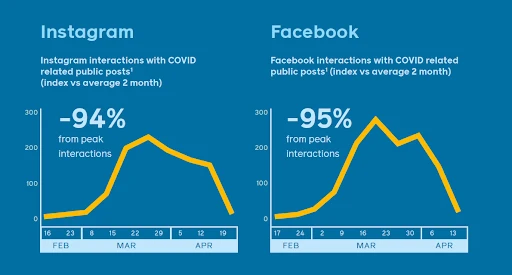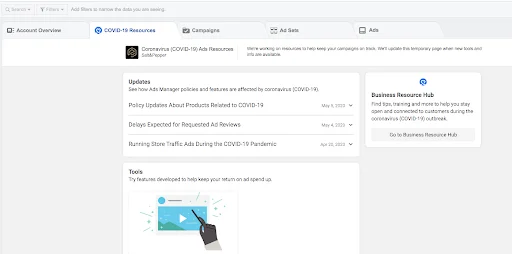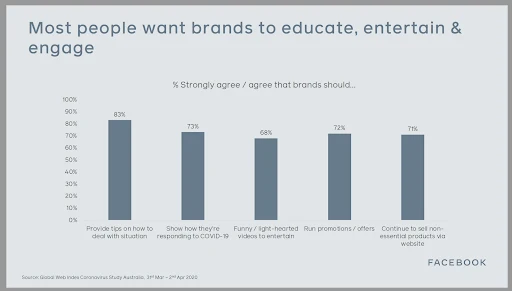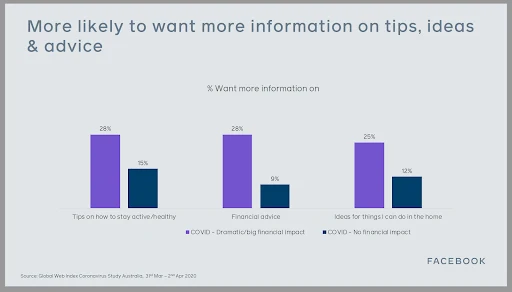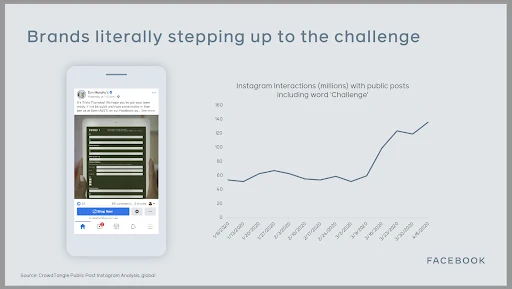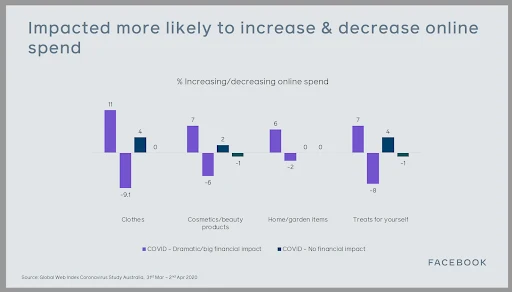What You Need to Know About Advertising and COVID-19
First and foremost, we want to acknowledge that many of us are tired of hearing about the impacts of the coronavirus.
It’s in the data, we have COVID fatigue!
We can see from these statistics that we’re far less likely to engage and interact with COVID related media, compared to a month or two ago.
That’s because we’ve been inundated over the last few months with information, misinformation and emails that find us well in these uncertain times. It makes sense that we want a break.
So we’re not here to continue talking about coronavirus. Instead, we want to deliver insightful, accurate information for what advertising will look like moving forward.
Behaviours Influence Advertising
It’s clear that as the routine of our audience changes, so should our advertising approach.
It seems when the workday is over, many people are choosing to disengage, log off, or have reached their timed social media quota for the day. For the best engagement, change your ad schedules to be on weekdays and run from around 10am – 2pm.
Evidence from Harvard Business Review shows that radio silence in these times has longer-term repercussions. So if you have out a pause on your advertising, consider that research over three recessions shows that public companies who have continued with marketing have actually performed better.
It’s also clear that people are hungrier for content. Posts from brands are seeing a higher daily engagement, which is definitely worth capitalising on. Try boosting your posts that see success, as now is a great time to benefit from that increased daily engagement.
Positive Policy Changes
This equips advertisers with the info they need regarding policy updates, delays, and running ads during the pandemic.
Some regulation changes include refusing ads that promote medical supplies that guarantee prevention of the virus or create a sense of urgency (e.g. implying a limited supply). They’ve also temporarily banned any ads for things like face masks, hand sanitisers, and COVID-19 testing kits.
These regulations are basically in place to prevent people from trying to exploit a public health emergency for a monetary gain. And we agree with them wholeheartedly.
Catering to the Customer
Facebook has utilised in-depth research to help businesses navigate how to continue using their platform to deliver content.
How should businesses react? Do our customers even want to hear from us? What areas should we focus on?
These are all questions many business owners have been asking, and Facebook has responded with data-backed recommendations.
They’ve shared valuable resources with us that point to how advertising should look moving forward. Remember, Facebook also owns Instagram so this is relevant across both platforms.
The good news is that most people still want to see brands on their feeds. They’re actually interested in how businesses are responding to COVID-19 and are happy for them to continue selling their products.
It can be easy to see big business as irrelevant in difficult times. Yet brands provide a sense of normalcy, which is comforting. Not to mention the benefits of retail therapy.
Have you been wondering what content your customers want to see from you the most? It seems users are keen to be given information, tips and advice. So keep that in mind when deciding your next ad campaign.
A challenge is a great way to engage customers and encourage brand promotion and sharing. Think of how you could incorporate a challenge into your advertising plan and encourage your audience to participate.
Those who have been more heavily impacted financially by COVID-19 have a stronger reaction to how they will continue to spend their money online.
This shows how advertising in this time is incredibly important, and cutting back the marketing budget is not always the most beneficial plan. There are shoppers with no financial impact who are still ready to spend money and those with dramatic financial impact who are even more willing to spend money.
This is most likely due to us wanting to treat ourselves while feeling down, spend the money we would have spent at restaurants and bars, spending more time online, or to feel we are supporting our community. In which case, make it easy!
Knock Knock, it’s TikTok
Although we have mostly been discussing advertising on Facebook and Instagram, it’s important we don’t ignore the social star of isolation.
TikTok has seen a massive increase in user downloads during this crisis. Interestingly, millennials are mostly responsible for the spike in downloads. They suddenly have more time on their hands and are very heavily involved in social media.
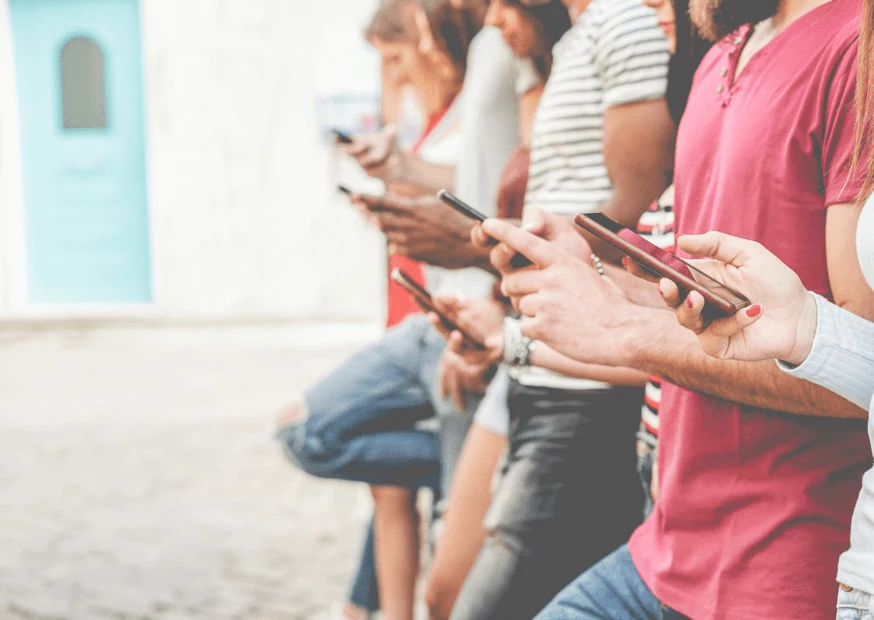
This is significant to advertisers, as it alters the demographic to include more millennials, who are often heavily marketed to. Advertising on TikTok is quickly becoming an area that needs attention.
In summary, here are the take-home points about advertising and COVID-19:
- Platforms will not allow businesses to capitalise with pandemic-related ads
- People are tired of hearing about coronavirus but are happy to hear from brands
- Users want to be educated and engaged
- Challenges are a great way to increase engagement
- Maintaining advertising presence is important
- TikTok should be on your radar
Take a look at the Q&A our Digital Advertising Director did for DAN (Digital Agency Network) for more of an insight into how we’ve helped our clients survive the pandemic.
